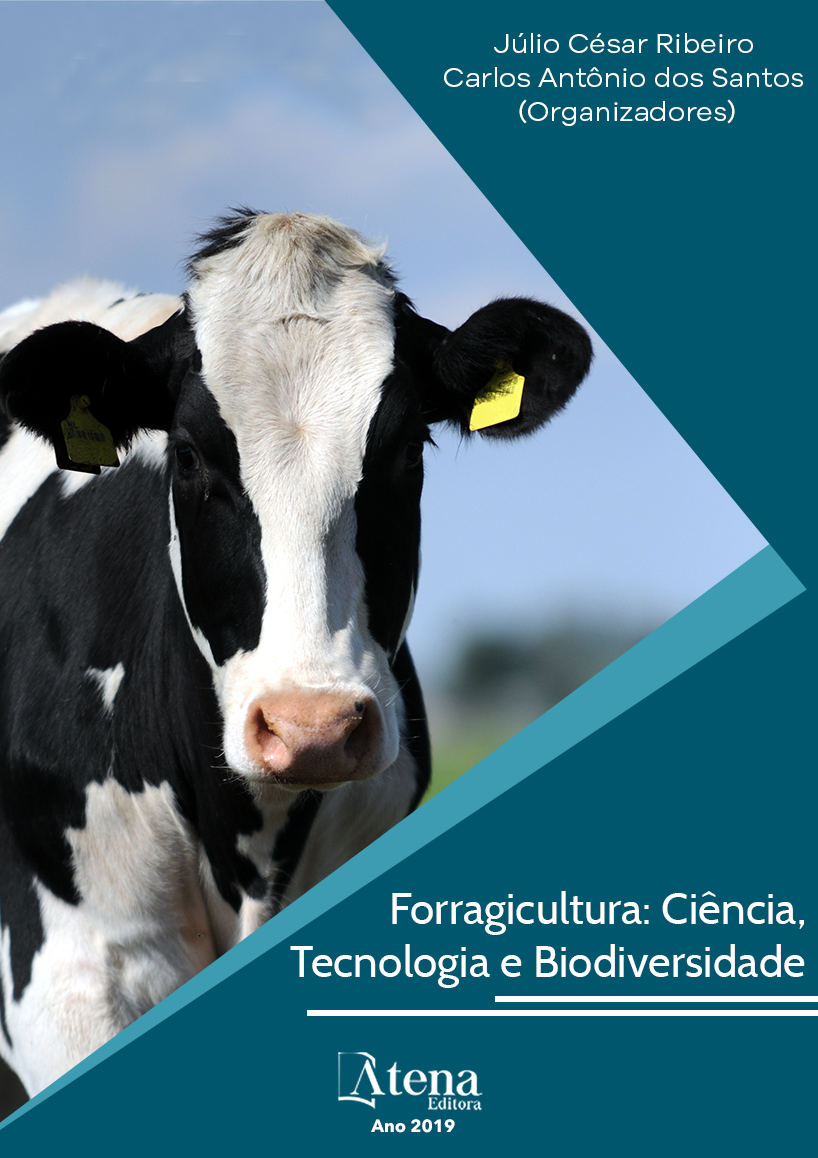
FRACIONAMENTOS DOS CARBOIDRATOS DA OPUNTIA STRICTA HAW VARIEDADE ORELHA DE ELEFANTE MEXICANA EM DIFERENTES ESTÁDIOS VEGETATIVOSv
A palma forrageira é uma excelente
planta, como cultura bem adaptada à região
do Semiárido. Devido a isso, tem despertado
o interesse dos produtores rurais nos
últimos anos, pelas suas características
morfofisiológicas. Com isso objetivou-se avaliar
o fracionamento dos carboidratos da palma forrageira orelha de elefante mexicana
(Opuntia stricta Haw) em diferentes estádios vegetativos. As amostras foram
processadas e analisadas no Laboratório de Nutrição Animal da Unidade Acadêmica
de Garanhuns (UAG/UFRPE). Foram estimados os carboidratos totais (CHOT),
carboidratos não fibrosos (CNF), que correspondem às frações A+B1, sendo obtida
através diferença entre os CHOT e a fibra em detergente neutro (FDN). A fração C que
corresponde a FDN indigestível e a fração B2, que corresponde a fração disponível
da fibra, foram estimadas pela diferença entre a FDN e a fração C. Fez-se ainda a
extração da pectina dos cladódios. Uma maior concentração de carboidratos totais
(CHOT) foi encontrada no estádio intermediário. Com relação aos CNF, foi encontrada
uma menor proporção no estádio maduro, o que pode estar relacionado ao maior teor
de carboidratos fibrosos nesse estádio. Para as frações de carboidratos, o maduro
apresentou menor concentração da fração A+B1 e maior para as frações B2 e C. A
palma Orelha de elefante mexicana (Opuntia stricta Haw) apresenta diferença nas
frações dos carboidratos presentes nos três estádios vegetativos.
FRACIONAMENTOS DOS CARBOIDRATOS DA OPUNTIA STRICTA HAW VARIEDADE ORELHA DE ELEFANTE MEXICANA EM DIFERENTES ESTÁDIOS VEGETATIVOSv
-
DOI: 10.22533/at.ed.2911917106
-
Palavras-chave: Palma forrageira, produção animal, semiárido.
-
Keywords: Forage palm, animal production, semiarid.
-
Abstract:
Forage palm is an excellent plant, as a crop well suited to the semiarid
region. Due to this, it has aroused the interest of the rural producers in recent
years, due to its morphophysiological characteristics. The objective of this study was
to evaluate the fractionation of the carbohydrates of the forage palm of the Mexican
elephant ear (Opuntia stricta Haw) in different vegetative stages. The samples were
processed and analyzed in the Laboratory of Animal Nutrition of the Academic Unit
of Garanhuns (UAG / UFRPE). They were estimated total carbohydrates (TCH),
and non - fibrous carbohydrates (NFC), which correspond to fractions A + B1, and
obtained by the difference between TCH and neutral detergent fiber (NDF). The C
fraction corresponds where indigestible NDF fraction and B2, which corresponds to
the fiber fraction is available, is were estimated from the difference between NDF and
fraction C. There was also the extraction of pectin cladodes. A higher total carbohydrate
concentration (CHOT) was found in the intermediate stage. Regarding the CNF, a
smaller proportion n the mature stage was found, what can this triggered by higher
content of fiber carbohydrates that stage. For the carbohydrate fractions, the mature
had a concentration of the fraction A + B1 and greater for the fractions B2 and C. The
Mexican elephant ear palm (Opuntia stricta Haw) shows a difference in the carbohydrate
fractions present in the three vegetative stages.
-
Número de páginas: 15
- Ana Lucia Teodoro
- André Luiz Rodrigues Magalhães
- Alberício Pereira Andrade
- Fleming Sena Campos
- Raquel da Silva Lima
- Daniel Bezerra do Nascimento
- Gabriela Duarte Silva
- Steyce Neves Barbosa
- Diego de Sousa Cunha
- Fabiana Castro Alves
- Diana Valadares Pessoa
- Sánara Adrielle França Melo


